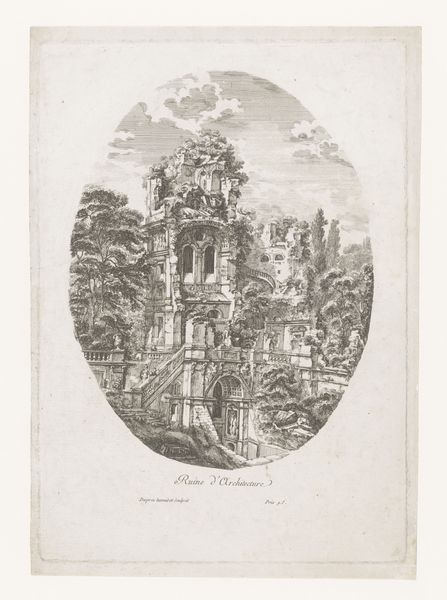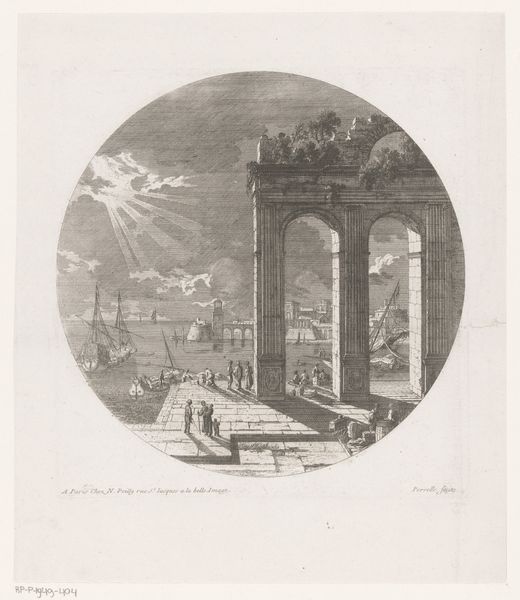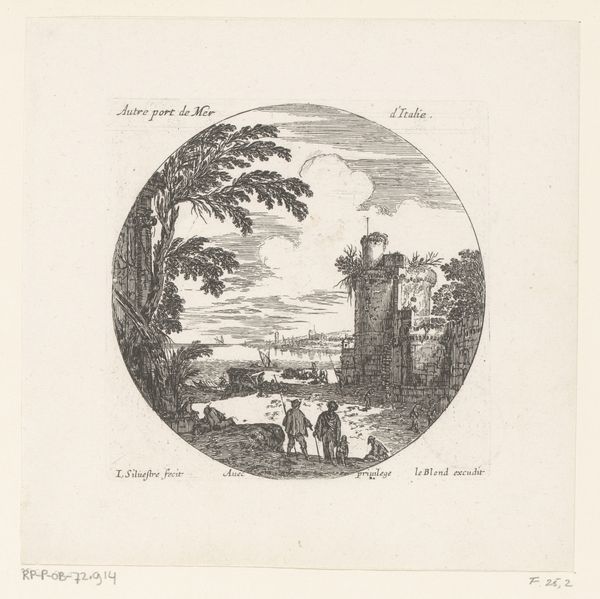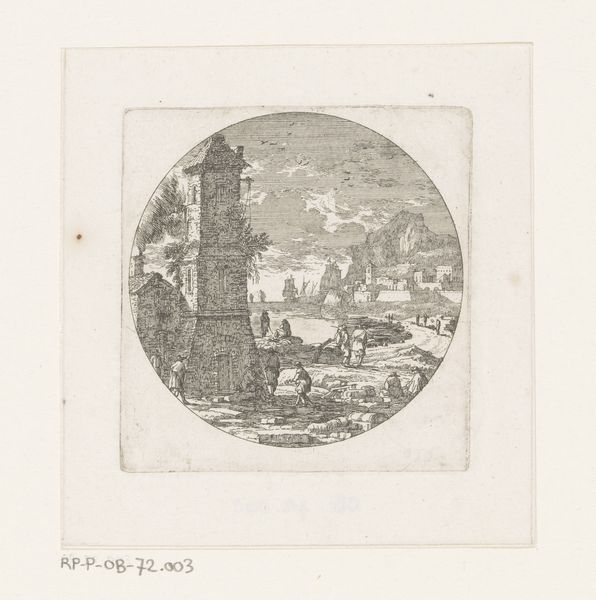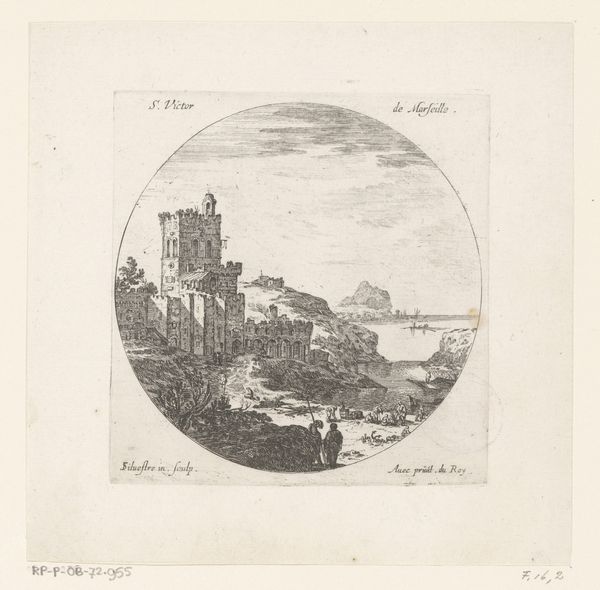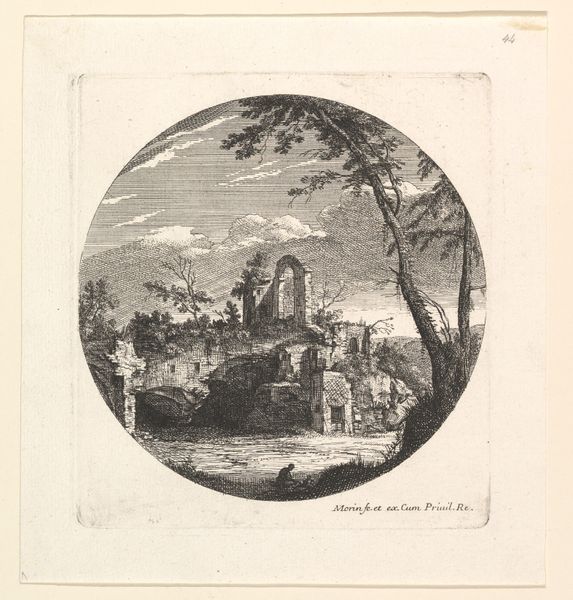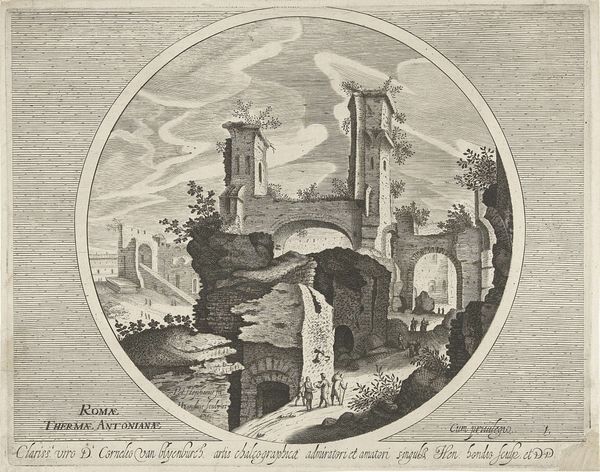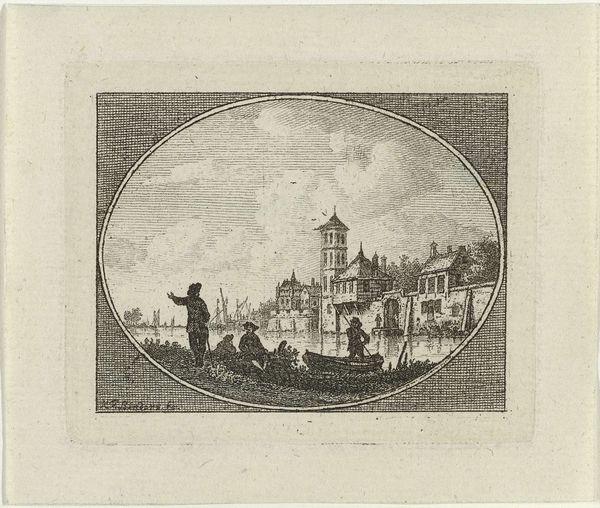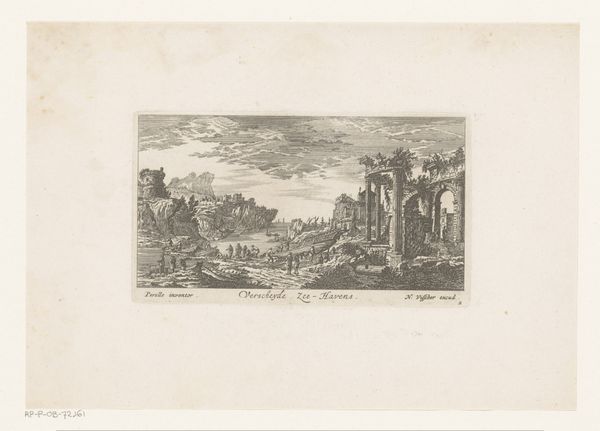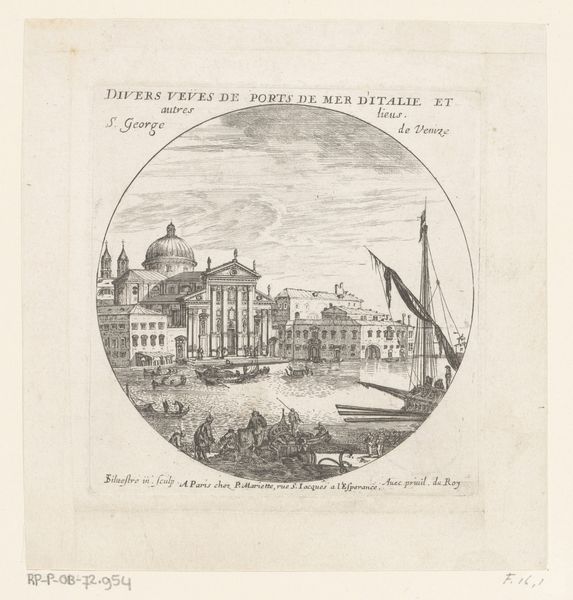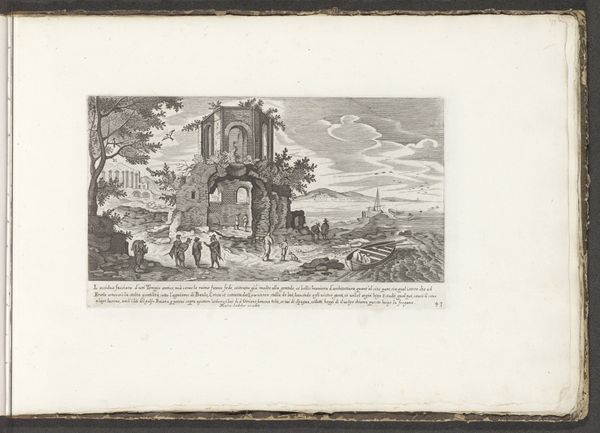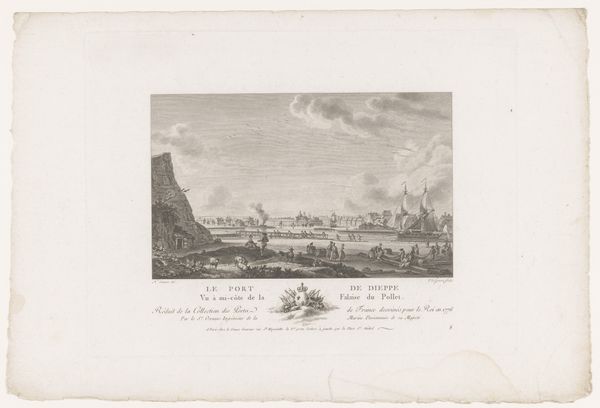
Gezicht op een ruïne in Efeze met figuren langs een pad aan het water 1750 - 1783
0:00
0:00
etching, engraving, architecture
#
neoclacissism
#
etching
#
old engraving style
#
landscape
#
archive photography
#
19th century
#
history-painting
#
engraving
#
architecture
Dimensions: height 377 mm, width 352 mm
Copyright: Rijks Museum: Open Domain
Editor: This is "Gezicht op een ruïne in Efeze met figuren langs een pad aan het water," an etching by Thérese Chenu, dating from around 1750-1783. The detail is incredible! I’m struck by how the ruined architecture seems to overshadow the human figures, lending a slightly melancholic feel. What do you see in this piece? Curator: The ruin, meticulously rendered, speaks volumes. More than just architectural decay, it symbolizes the transient nature of empires and civilizations. Look at the deliberate placement of figures – they are dwarfed by the scale of the ruins, reminding us of our own place in history, walking the paths of those who came before. Do you see how the artist positions us, the viewers, within this contemplation? Editor: Yes, I think so! It's like we are meant to reflect on time and the legacy of civilizations. But why Ephesus? Curator: Ephesus, then as now, would evoke classical grandeur and subsequent decline. The ruins become potent symbols of memory and loss, amplified by the Neoclassical fascination with the past. Consider also how the circular frame isolates this scene, like a memory carefully preserved, a fragment of a dream. What emotional response does that evoke? Editor: It feels a bit removed, almost like observing a scene from a different world or time, highlighting the distance between us and the past. So it’s not just about aesthetics but about making a statement. Curator: Precisely. It's a reminder that even in ruin, there's a continuity. Human figures persist, adapted to their surroundings, echoing a silent resilience against the grand sweep of time. What do you make of the human figures' active role near the water? Editor: It brings life back into the ruins, doesn’t it? Maybe history isn’t completely dead. Curator: Precisely. Now consider what cultural narratives endure, and how are they reshaped. This etching reveals one way we are all participants in constructing continuity. Editor: That’s a powerful idea! It’s more than just a pretty picture; it's a mirror reflecting our relationship with history and memory. Curator: Exactly. Every detail chosen is a symbol to be understood and felt over centuries, echoing what remains long after empires crumble.
Comments
No comments
Be the first to comment and join the conversation on the ultimate creative platform.
